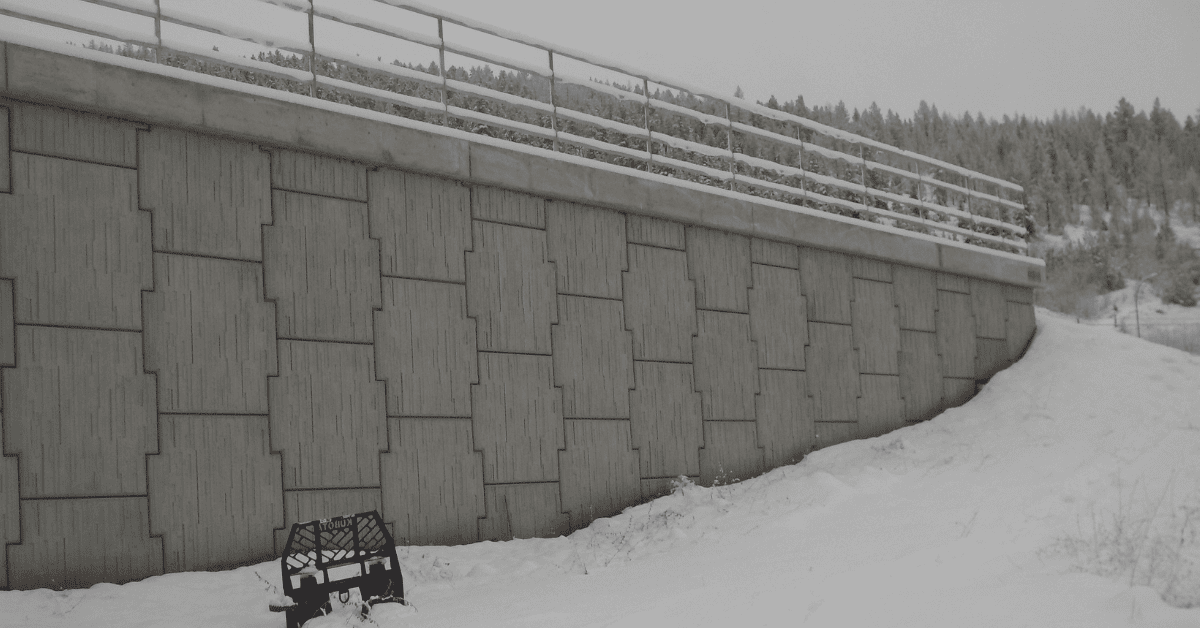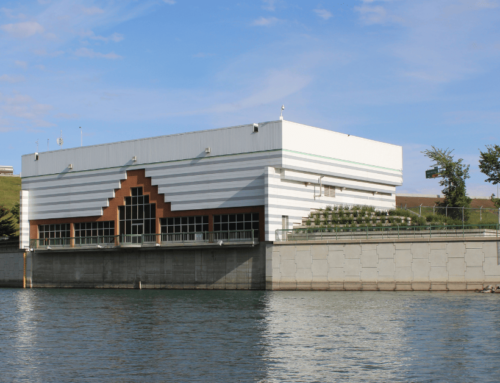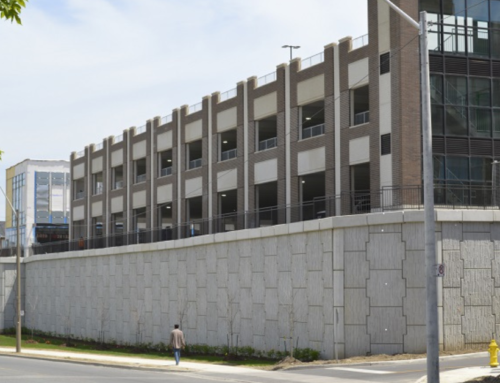Many engineers unfamiliar with MSE walls make the assumption that these walls must be founded below the prevailing depth of frost. This is simply not necessary and results in an unnecessary expense when it is enforced as a project specification. The practice of not embedding MSE walls for frost has existed for 40 years and there has not been of a single reported case of MSE wall distress due to frost heave. The reasons are a combination of the flexibility of the facing to accommodate any minor heave without distress, and the absence of a large concrete footing for trapping of ice lenses. At some geographic locations where more severe frost susceptible or frost sensitive foundation soil for an MSE wall is encountered, added insurance against frost movements can be achieved by installing what is commonly referred to as a “frost trench”. An example geometry of this can be seen below. The basic concept is to replace the frost-susceptible foundation soil with a non-frost susceptible soil, typically a clean granular material for the prevailing frost depth but only in the zone under the levelling pad and immediately behind it. This will often introduce a trench that collects groundwater, laterally drained if needed, but since the fill in this trench is granular, there will be negligible expansion upon freezing.











